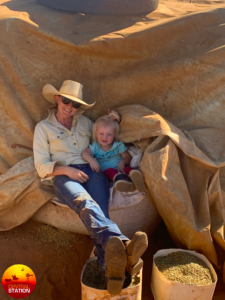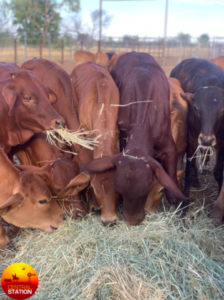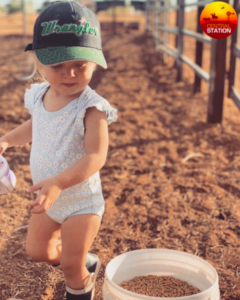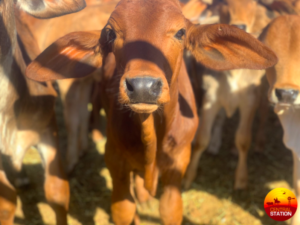Tender loving care – station style
Written by Mick Cameron – Overseer, Bulka Station
My name is Mick Cameron. I, along with my partner Anna and two-year-old daughter Mackenzie, live and work on Bulka Station in the Kimberleys, Western Australia. In this blog I would like to talk about our early weaning program at Yougawalla Pastoral Company (YPC), its advantages, and what is involved in successful early weaning while being cost efficient.
Weaning is the single most effective management tool to minimise the loss of condition in breeding cows. To early wean means we take them away from their mother a little earlier then ‘normal’ due to the nature and climate of the country.
The primary reason for early weaning is to give the breeding cows the best chance to gain or keep their body condition, reduce nutritional stress on the breeder and ultimately help them to stay alive during the dry season.
Two different types of weaners are drafted, according to their condition rather than size. The first is the oldest and most conditioned weaners, and the second is what we call a TLC (Tender Loving Care) weaner – these are slightly younger weaners which have a bit of catching up to do.
The older and more conditioned weaners are pretty well ready to be on their own after some low stress handling and tailing in the yards. The heifers get walked out into our weaner paddock and the young males get trucked to Margaret River Station.
The TLC weaners are placed into a feed yard where we provide high protein pellets and good quality hay. When Anna and I first started here, having never done an early weaning program, we were measuring by the bucket what feed they were receiving and trying to keep it as cost efficient as possible.

However, after monitoring closely both the progress of the TLC’s over a period of time and the method we were using, we found that there were always the same weaners getting to the pellets first and eating the majority before any of the others could get any. We then decided to bulk feed – it was generally a bulka bag every couple of days (bulka bags are around 600kg in weight). We hoped this would then minimise the chance of the smaller weaners missing out. The main idea behind this was the weaners first to the feed would get full and move on, letting the others in for a feed. We found this worked and made a great successful impact on the development, growth and condition of the TLC’s. Every TLC was now getting a chance to feed and not just be stuck grazing on hay.

A key aspect in the early weaning process is monitoring; there has to be someone always checking the weaners. Anna does just about all of the monitoring and feeding, we found that if the same person is around them the majority of the time it is a lot easier for them to notice sick or injured animals, therefore making it a lot more efficient and effective in getting treatment and care to them.

The most important step in the early weaning process is to draft the weaners roughly every 10 days. In this drafting process, the top performers (better conditioned weaners) are drafted off and placed in a small paddock, where they are gradually fed less of the pellets/hay and encouraged to graze on the grass, enabling them to develop and handle pasture conditions. This paddock is in close proximity to the feed yard from which the weaners started in; this is to minimise the time it takes to feed out and also ensures they can be easily monitored for progress. From my perspective, this is where to be successful and cost efficient in the early weaning process. This step has to be consistent and closely monitored in order to prevent bullying and allow evenness of access to feeds. It also allows these transitioning weaners to the heavier weight group to be at less risk of disease.
There is no “they will be right until next week or next muster”. If the weaners don’t get drafted often enough it can become extremely expensive and the tail end (lighter less conditioned) weaners get constantly bullied off the feed, therefore not getting the sufficient amount of protein and energy requirements they need.
If the light weaners do not get enough protein and good quality roughage, which is very important in developing their rumen, they won’t go forward – at times they’ll even go backwards. Therefore, you need to create a longer period of feeding and longer time frame that the weaner has to be in the yard. New TLC weaners get added nearly every muster, so this step is crucial to having a constant turnover of weaners going out when they are in paddock condition.

During the season in between musters, the weaners in the small paddock are brought in. Having lifted their condition, they are re-drafted into heifers and young males – the heifers are tailed and walked into the weaner paddock with the rest and the young males slot in with the other males from previous musters that get trucked to Margaret River.
We hope for another successful year with our early weaning program!
